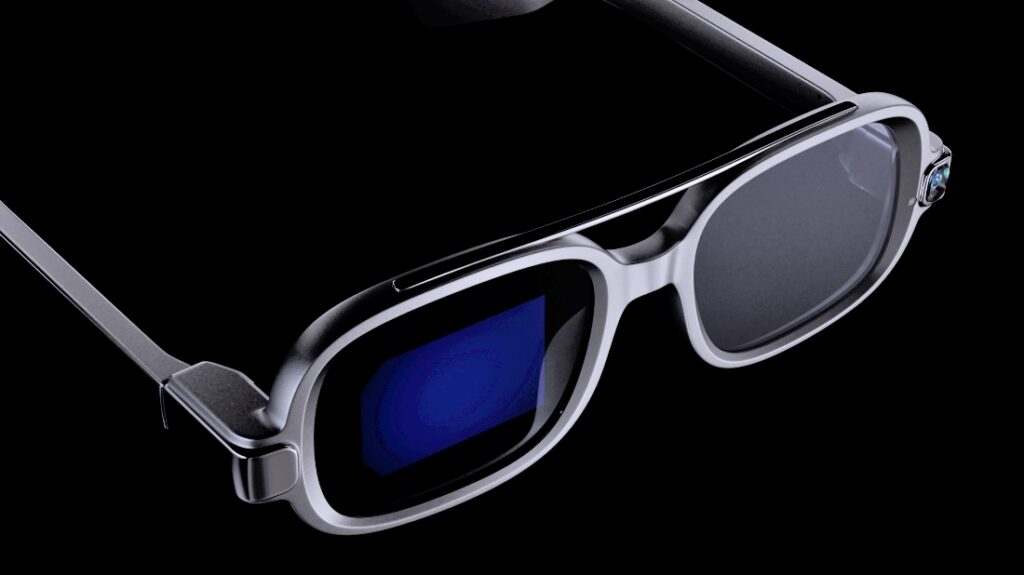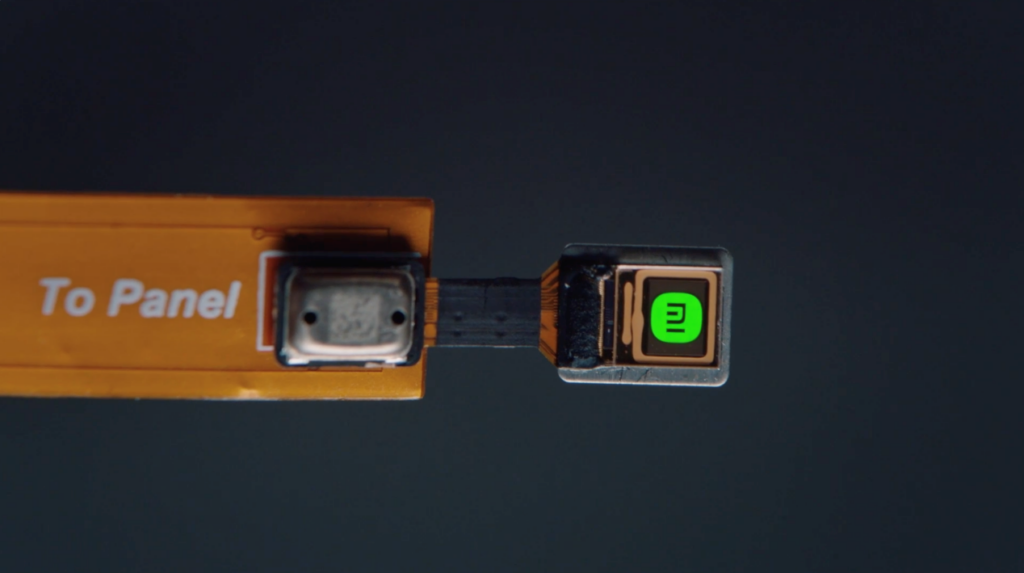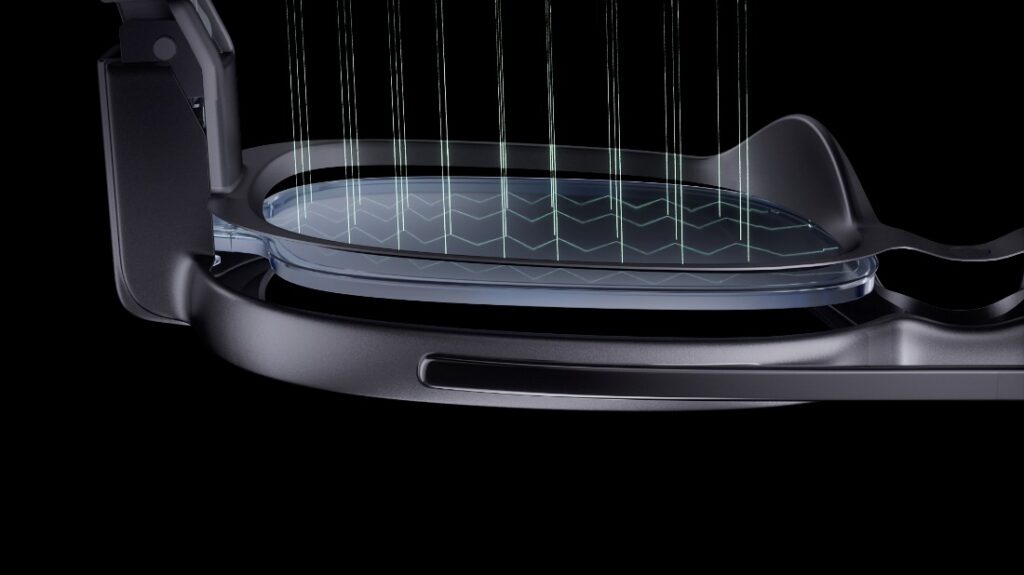Closest step yet to what AR glasses should be.

Xiaomi (pronounced show-me) announced their cleverly named Xiaomi Smart Glasses—the latest entry in new smart wearable devices. Xiaomi says their Smart Glasses (XSG) combine imaging systems and sensors into a subtle, ordinary glasses design using MicroLEDs with optical waveguide technology. The XSFs weigh 51 g. By comparison, Ray-Ban Original Wayfarer weighs 45 g, but unlike the conventional Ray-ban, the XFSs can display messages and notifications, make calls, navigate, capture photos, and translate text right before your eyes.

To fit the form of ordinary glasses, subtle challenges of imaging and internal component arrangements had to be overcome. Xiaomi used MicroLED imaging technology to lower the design space needed in the structural design and the overall weight of the device.
Tiny bright pixels
MicroLEDs pixels are individually lit like OLEDs—its emissive property allows for brighter displays and deeper blacks. But MicroLEDs also have a higher pixel density and longer lifespan while having a simpler structure. This allows for a more compact display, as well as easier screen integration.

Xiaomi’s glasses display chip is 2.4 mm × 2.02 mm. Under a microscope, the display is roughly the size of a grain of rice, with individual pixels sized at 4 ?m, which enables the display to fit within the glasses’ frame. To allow sufficient light to pass through the optical structures before reaching the eye, even in direct sunlight, Xiaomi chose a monochrome display, which can obtain a peak brightness of 2 million nits.

By adopting optical waveguide technology, which refracts lights at 180°, the MicroLED display transmits the data to the eye through the microscopic grating structure of the optical waveguide lens.
Not a secondary smartphone display
Xiaomi Smart Glasses have 497 components, including miniature sensors and communication modules; it is not just a second screen for one’s smartphone. Instead, says the company, it functions as a new smart terminal with independent operating capability. In addition to essential notification, call display, etc., it can also independently complete functions such as navigation, take photos, be a teleprompter, and do realtime text and photo translations. Xiaomi says interaction logic has been implemented to minimize interruptions at inconvenient times and display important information timely when critical.
AI in your eye
Xiaomi’s interaction logic, which they say does not disturb regular use, displays critical information promptly. After many in-depth discussions, several key scenarios, including important notifications, phone calls, navigation, and photo translation, were chosen as the primary interactions one would want and need with smart glasses. The company also employed its ‘XiaoAI’ AI Assistant in the investigations. In this way, says Xiaomi, the smart glasses can display the most important information when it is needed.
With notifications as an example, it is obviously inappropriate to display all the push notifications from one’s smartphone. Therefore, XSG selects and displays the most important messages, such as smart home alarms, urgent information from office apps, and messages from important contacts, etc., to avoid excessively disturbing users.
Phone calls are a logical use scenario for smart glasses, and the glasses would let the user see the caller’s number. Using the XSG’s dual beamforming microphone and speaker, Xiaomi says both parties can hear each other clearly.
Navigation is, of course, very useful in driving, cycling, and walking scenarios. The XSGs can present roads and maps in front of the user in real-time so that one can keep their eyes on the road.

The 5MP camera on the front of the glasses can also take photos and translate text in photos. By utilizing the built-in microphone and (a proprietary) translating algorithm, XSG will be capable of transcribing audio into text with realtime translations. The company says the indicator light next to the camera will illuminate when the camera is in use to indicate photos are being taken.
To achieve this level of functionality, the glasses will be equipped with a quad-core ARM processor, battery, touchpad, Wi-Fi/Bluetooth modules, Android operating system, and more.
What do we think?
Poor Mr. Zuckerberg must be furious. After his triumphus reveal of the Facebook Ray-Ban glasses, Xiaomi’s smart glasses make Facebooks look like a joke. The XSG weighs 51 g, the Facebook Ray-Ban glasses weigh 50 g or more and don’t have a display.
Except for the camera’s visibility, the XSG are inconspicuous, which is requirement number one for AR glasses. And translations are a primary must-have application for AR glasses.
Using a monochrome display is less expensive, doesn’t suffer from color ringing, and uses a more straightforward driver. Under certain lighting conditions, a person with nearsighted vision might see faint skinny lines of the waveguide, but they’d disappear in seconds as your brain compensates for them. Also, Xiaomi’s use of micro LEDs was the right choice. Apple, who is preparing their AR glasses, gets that, and that’s why they bought a MicroLED company LuxVue Technology.
The XiaoAI filtering of what information gets displayed is a superb example of an integrated and well-thought-out system design, not just a glasses design.
Xiaomi didn’t mention a release date or pricing, and it is possible the glasses won’t be launched outside of China.
For more information on augmented reality, go here.





